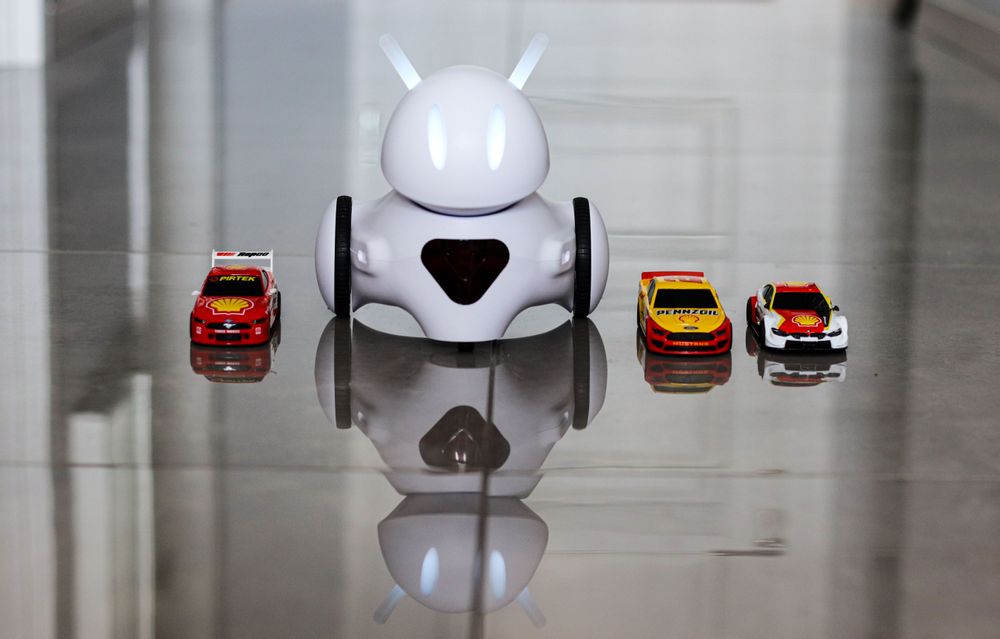Dorota Dankowska
Ready, steady, go Photons – Math Racing!


Class goal:
- To understand the terms: product (multiplication), quotient (division)
- To fluently multiply and divide within 100
- To learn how to program the robot using the Photon Badge interface
- To learn how to be a team player
- To take part in a math contest
Required items:
- tablets (to control the robots)
- cards with numbers
- chairs
- stopwatch
Lesson scenario:
Preparations:
Prepare the classroom according to the provided classroom layout image. Set the start line for the robots, put chairs backward to the start line, at a considerable distance put cards with numbers next to each other parallel to the start line. The number of pole positions depends on the number of robots taking place in the race. We suggest playing in groups of 2-4 robots.
Prepare a scoreboard.
Lesson scenario:
Revise with children the meaning of math terms quotient and product. Explain the class objectives and divide children into pairs. Then schedule the race order for each team. Depending on the number of robots at your disposal, 2 to 4 teams can race at the same time.
Children must work together as a pair. One of them sits in the chair with its back facing the start line. The other one stands in front of the starting line, sees the cards with numbers - answers. You ask questions, e.g., What is the product of numbers 8 and 7? Or What is the quotient of numbers 48 and 6. The pupils' task is to determine the right answer and then drive over to the card with the correct result. Pupils must work together - the standing child (who sees the numbers) gives robot steering instructions to the sitting child. The robot's operator programs the robot accordingly in the Photon Badge (or controls it with the Photon Joystick interface).
The recommended time limit for the programming part is 1 minute. After that time, you give the race starting signal. All should go at your signal. The robot that gets to the card with the correct answer first gets 3 points. The rest gets 1 point for the right answer. Providing the wrong answer earns 0 points. Before the next race, you put new cards with answers.
In the 2nd round, children switch roles. Each team should take part in 3-4 games made of 2 rounds. The results are put on the scoreboard. The team with the highest score wins. You need to consider draws too.
Interesting facts / Questions time
Interesting facts:
- The oldest multiplication table based on the decimal system was found in China. It's been written on bamboo strips and over 2300 years old.
Discussion topics:
- Good communication between partners is the key to success.
- Why do we need to know the multiplication table by heart?